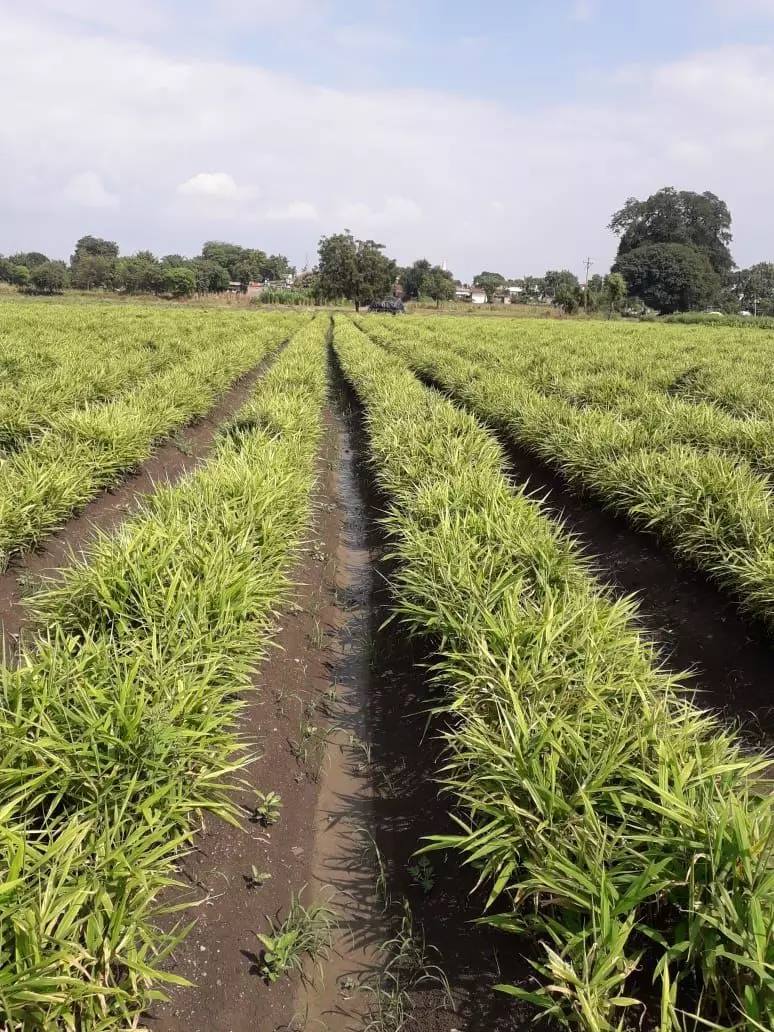Ginger, the spice of life, does not find flavour with farmers
There’s a glut of ginger in the market and farmers are leaving behind the crop in the fields, as it is unviable to harvest it. From Rs 5,000 a quintal last year, prices have crashed to as low as Rs 500 a quintal. This, when consumers have taken a shine to ginger.


Farmers are not getting the price they deserve despite growing demand for ginger. All photos: Gaon Connection
It was not something he wanted to do, but after months of hard labour and failed hope of a bumper harvest and good profit, 42-year-old farmer Prakash Maruti Ardwad from Devangra village in Latur district was left with no choice. He decided to not harvest the ginger planted in 50 gunthas (1.5 acres or 0.6 hectares) land in Maharashtra. The price for a quintal had plummeted to between Rs 500 and Rs 700 in his district from between Rs 2,000 and Rs 5,000 seven months ago.
“I will lose lakhs of rupees if I harvest or if I don’t,” Ardwad told Gaon Connection in a mix of Hindi and Marathi. Last year, he managed to sell 70 quintals of ginger at Rs 5,000 a quintal and 20 quintals at Rs 2,000 a quintal. The price when he planted the seedlings two years ago was Rs 7,500 a quintal.
Also Read: An overdose of immunity boosters for protection from COVID19 can possibly be dangerous
This was the last straw for a farmer already suffering the effects of a bad market due to the COVID19 pandemic. This year too has been bad for Ardwad, who lives about 550 kilometres from financial capital Mumbai.

Farmers have been taking a hit, even though the retail price of ginger crossed the Rs 300 mark for a kilogramme last year, driven by people’s increased consumption of ginger, a known antioxidant. This year, prices are around the Rs 100 mark in some retail markets. But, Ardwad gets only between Rs 5 and Rs 7 a kilogramme when it is bought off him at the farm (farm gate price).
Also Read: Full of Beans: Wholesome winter food in Uttarakhand
Cost of cultivation
To cultivate an acre of ginger, a farmer needs 10 quintals of seeds. When Ardwad planted, it was Rs 7,500 a quintal. Besides this, fertilisers and insecticides cost up to Rs 90,000 per acre. However, if all goes well, a farmer can harvest about 100 quintals of ginger.

Forty two-year-old farmer Maharudra Shetty of Ustari village in Latur’s Nilanga taluka has grown ginger for several years. He has seen the price come down from Rs 7,000 a quintal to Rs 5,000 last year and between Rs 500 and Rs 2,000 now. “Forget profit, farmers can barely meet their costs,” he told Gaon Connection.
Growing demand, falling price
The irony is that farmers are not getting the price they deserve despite growing demand for ginger. Ginger is widely used to flavour tea, add zing to a meal and serves as alternative medicine too. During the first wave of COVID, people consumed a lot of ginger decoction to boost their immunity.
Despite that, during the second wave, prices have crashed. “Ginger is extremely inexpensive this year. Last year, it cost between five and seven thousand rupees a quintal. This year, it has not crossed one thousand five hundred rupees,” Ashok Shane, a Maharashtra merchant who buys ginger from farmers and sells it to big traders in Latur, told Gaon Connection.
“The market has fallen. The pandemic, lockdown, hampered distribution of goods and a bumper harvest have resulted in this,” Shane said.

According to a March 2021 report of the Ministry of Agriculture and Farmers’ Welfare, ginger was cultivated in 171,000 hectares in 2020-21, with an estimated 1.8 million tonnes of production. About 179,000 hectares were under ginger in 2019-20 while in 2018-19 it was 164,000 hectares, with a total production of 1.78 million metric tonnes.
According to the National Horticulture Board, Assam, Maharashtra, West Bengal, Gujarat and Kerala are the five most significant ginger-producing states.
Why the fall in price?
“Ginger was considered a lucrative crop with a potential profit of eight to ten lakh rupees an acre. As a result, many farmers began cultivating it,” Maharudra Shetty said. First-time ginger cultivators such as 35-year-old Prayomad Gaikwad of Maharashtra’s Osmanabad district took a big hit.
Some learnt a lesson from other’s experiences. Ginger is also grown in Madhya Pradesh’s Narsinghpur district. Thirty-nine-year-old farmer Jogendra Dwivedi planted very little ginger last year. “I regularly speak to farmers from other states and I knew the area under cultivation was increasing. I was concerned the rate would fall because of excessive supply, and so I planted solely for the seeds,” he told Gaon Connection.
Read the original in Hindi here.

